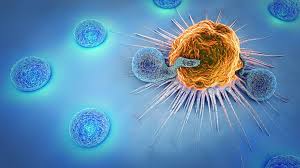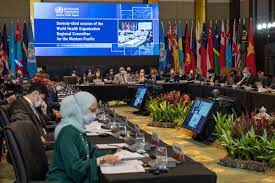Date: October 26, 2024
Researchers at the Johns Hopkins Kimmel Cancer Center have unveiled a significant advancement in the understanding of tertiary lymphoid structures (TLS) and their role in treating hepatocellular carcinoma (HCC). The findings, published in Nature Immunology on October 25, suggest that these lymph node-like structures may be pivotal in enhancing the body’s immune response to liver tumors, particularly following presurgical immunotherapy.
Key Findings of the Study
The study highlights a previously unidentified stage of TLS that appears in liver tumors after patients receive immune checkpoint inhibitors—agents that stimulate the body’s innate ability to combat cancer. Researchers observed that patients exhibiting a higher presence of these structures experienced a notable reduction in cancer recurrence post-surgery. According to Dr. Mark Yarchoan, an associate professor of oncology at Johns Hopkins, “the takeaway is that these structures may be very important in the generation of anti-tumor immunity and may increase the likelihood of curing the cancer.”
Yarchoan and his team previously conducted pioneering clinical trials exploring immunotherapy applications before surgery for HCC. While some patients achieved significant benefits from this treatment approach, a clear understanding of why certain individuals responded better remained elusive. The current research indicates that tumors enriched with TLS tended to shrink more effectively and demonstrated lower rates of recurrence compared to those lacking these structures.
The Role of Tertiary Lymphoid Structures
Characteristically, TLS contain immune B cells centrally located, surrounded by tumor-fighting T cells, mimicking the architecture of natural lymph nodes. The study’s authors found that in patients whose tumors responded optimally to immunotherapy, the TLS exhibited distinct patterns. Notably, structures developing within the tumor’s core, as opposed to those forming at the edges, were associated with better treatment outcomes.
Lead author Dr. Daniel Shu, who conducted this research during his fellowship at Johns Hopkins, noted, “In tumors where immunotherapy had the greatest effect, we found another form of tertiary lymphoid structure that has not been seen before. These patients tend to have the greatest benefit from immunotherapy.”
Future Directions
The research team plans to investigate whether they can induce TLS formation in patients who do not naturally develop these structures after commencing immunotherapy. Additionally, they will explore how various combinations of immunotherapies and presurgical treatments influence TLS formation and overall patient outcomes.
Notably, this novel form of TLS was also observed in other tumor types responsive to immunotherapy, indicating the potential broader implications of this discovery across various cancers.
Collaborative Effort and Funding
This groundbreaking study is a result of collaborative efforts within the imCORE Network, with contributions from numerous experts at Johns Hopkins, including Elana Fertig, Ph.D., a professor of oncology and biomedical engineering. The research was supported by multiple institutions, including the National Institutes of Health and F. Hoffmann-La Roche.
Conclusion
The identification of TLS as crucial players in the immune response against liver tumors marks a significant milestone in cancer research, particularly for patients battling hepatocellular carcinoma. As the scientific community further investigates the therapeutic potential of these structures, there is hope for improved treatment strategies that could enhance survival rates and outcomes for cancer patients worldwide.
For further details, please refer to the full study published in Nature Immunology.











